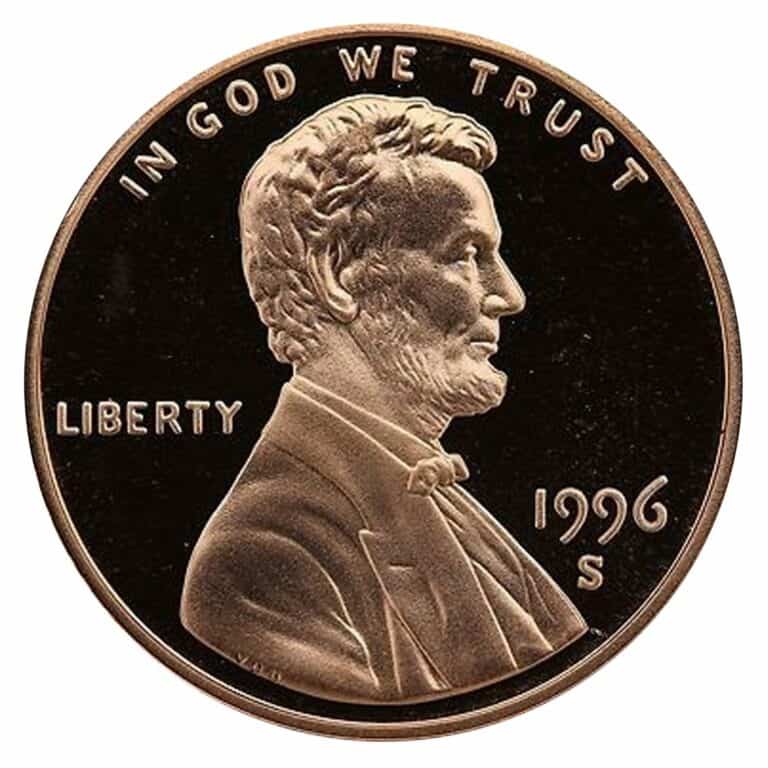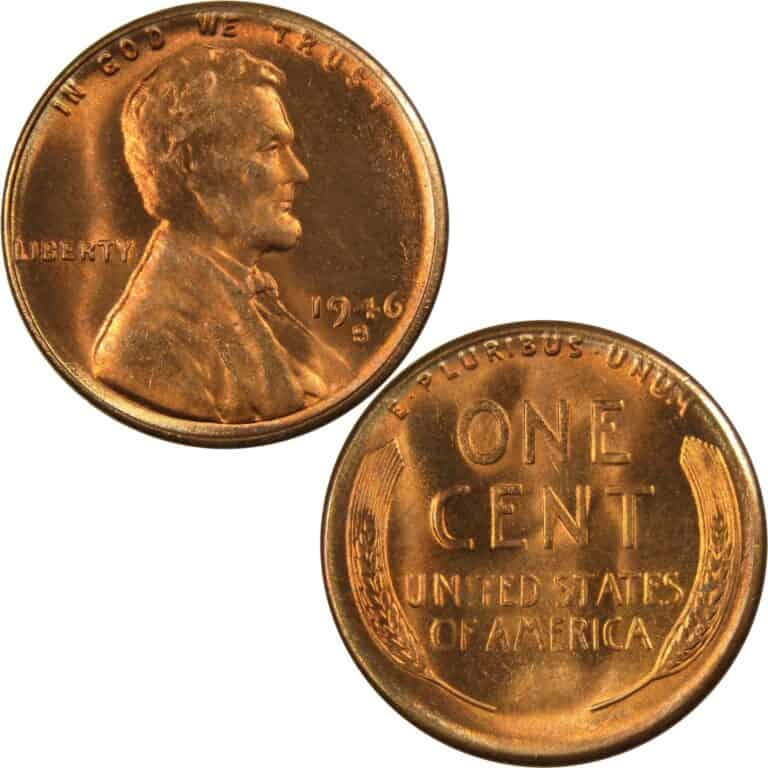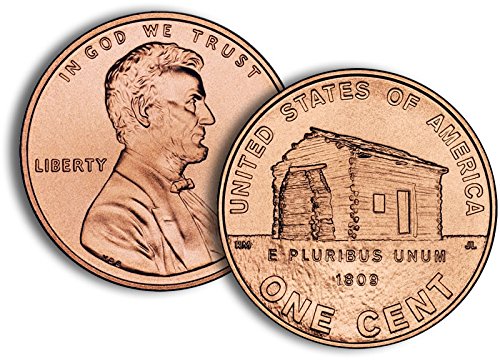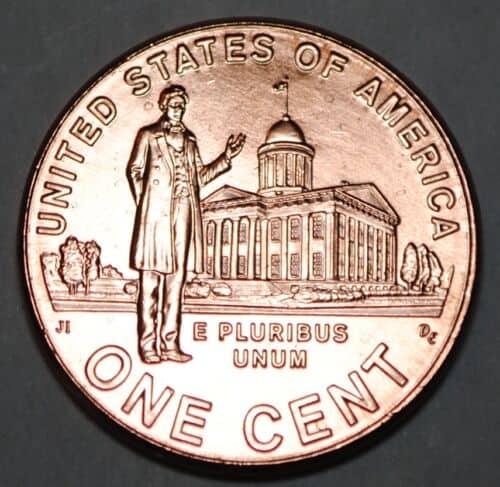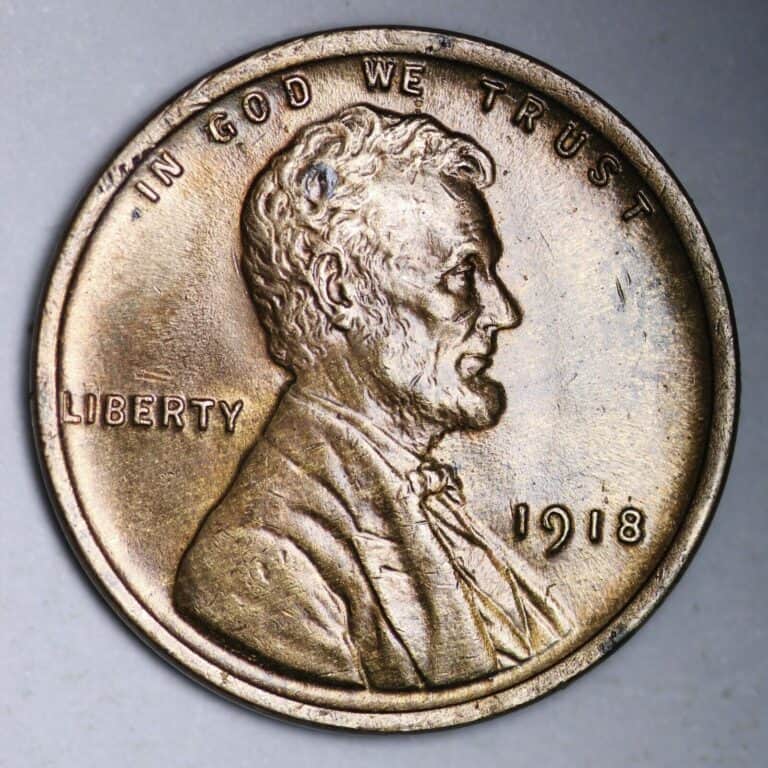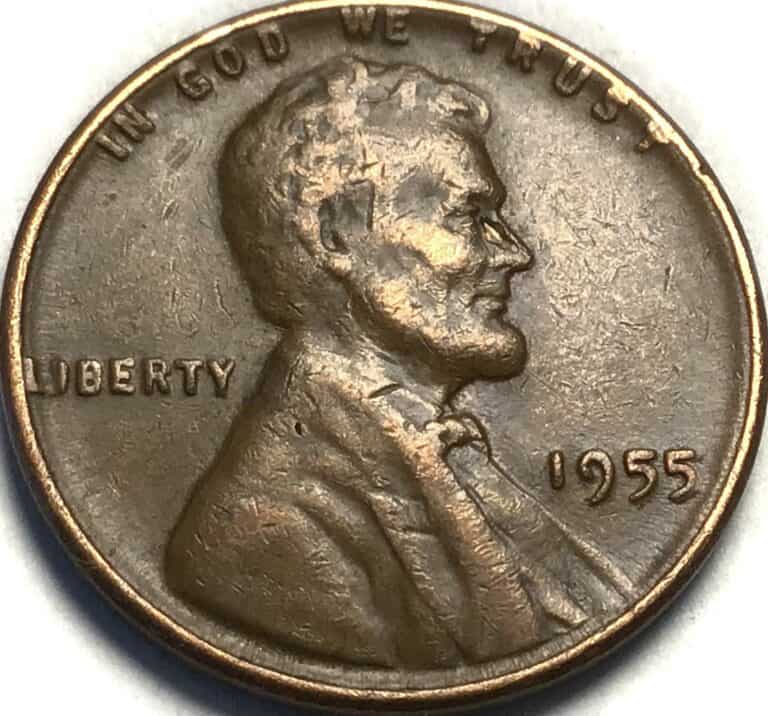1902 Indian Head Penny Value: How Much is it Worth Today?
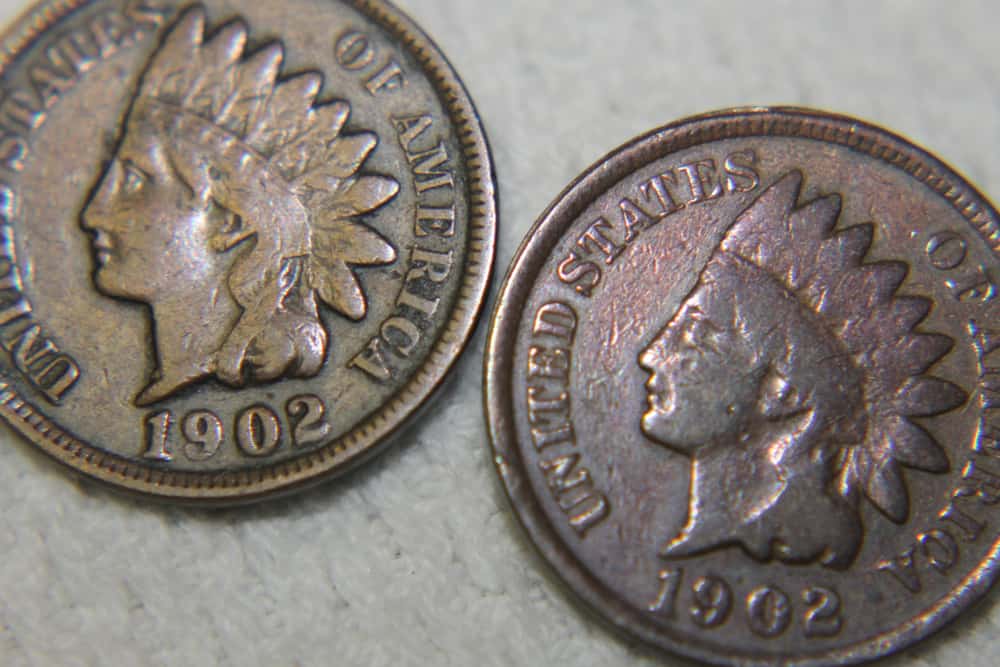
The Indian Head penny is popular among coin collectors today because of its endearing, heartwarming design of a young Indian girl wearing a native, feathered headdress. But apart from having a poignant design, many issues of this penny are extremely valuable.
That includes the 1902 mintage of the Indian Head penny, which can sell today for thousands of dollars in the right grade and condition. Unlike most coins in US mintage, there’s only one variety of this coin—the Philadelphia-minted penny. That makes this coin even scarcer and more valuable.
If you’re curious about the 1902 Indian Head penny value in modern times, stick around. We’ll be talking about the coin’s history, color varieties, and mint errors that can shoot up the value of these coins. Ready? Let’s jump right into it!
1902 (P) Indian Head Penny Value Chart |
||||||
| Color Variety | Extremely Fine | AU58 About Uncirculated | MS61 Uncirculated | MS63 Select Uncirculated | MS66 Gem Uncirculated | MS68 Superb Gem Uncirculated |
| MS Brown | $15 | $35 | $45 | $75 | $290 | – |
| MS Red Brown | – | $50 | $70 | $575 | ||
| MS Red | $75 | $130 | $1,750 | $17,000 | ||
1902 No Mint Mark Indian Head Penny Value
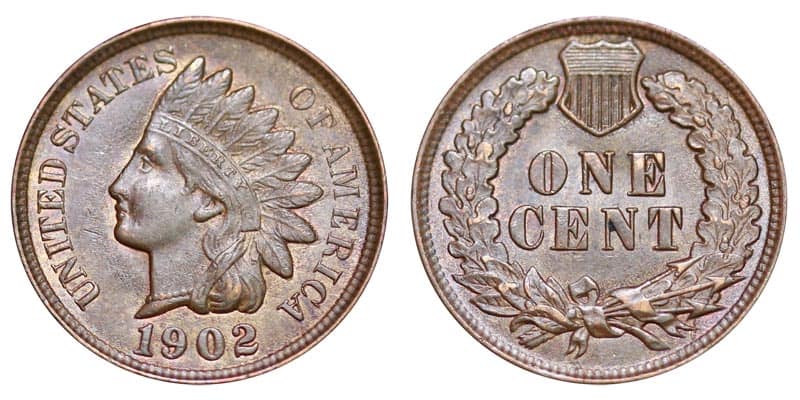
By the middle of the 19th century, Americans had gotten sick of the one-cent coin. It was way too large and heavy to carry around in people’s pockets for such a low face value. It was replaced in 1857 with the Flying Eagle cent, which also ended up being criticized for its weak strikes.
Very soon after the unpopular Flying Eagle cent was put into circulation, James B. Longacre, the Chief Engraver of the Mint, started brainstorming for yet another penny to replace this one-cent coin. His design idea? A charming young girl wearing a native Indian-American headdress.
In 1859, the first of the one-cent coins—later fondly called the Indian Head pennies—was struck. The obverse indeed showed that young lady wearing a feathered headdress. Legend has it that Longacre used his own young daughter, Sarah Longacre, as the model for this design.
The story goes that when some native Indian chiefs were visiting the Mint, Sarah begged her father to let her see them. When she did, one of the chiefs put a headdress on her. Longacre was said to have immortalized this moment on the coin.
However, this story has long been disputed, since Sarah was in her twenties and not a little girl by the time this coin was designed.
Around the obverse, surrounding the Caucasian girl with the Indian headdress, are the words “United States of America” and the mintage year.
The reverse, on the other hand, was quite simple. It shows a wreath of oak leaves and a small shield on the top of the coin. In the middle of the surface are the words “One Cent.”
Since the coin’s inception in 1859, all the pennies were struck in Philadelphia. It was no different in 1902 when the Philly Mint produced a total of 87.3 million Indian Head pennies.
This is the third-highest mintage in history for the coin. Its highest mintage would come later in 1907, two years before the final run of the series. As they were produced in Philadelphia, none of these coins had any mint marks.
The incredibly high mintage of Indian Head pennies this year might have been a direct result of the economy booming again in the early 1900s after the Civil War had let up.
In circulated condition, 1902 Indian Head pennies are valued at anywhere between $1.50 and $35. A coin in very good condition might be sold today for around $3, while a coin that is extremely fine could sell for $15. In about-uncirculated grades, the price can go from $20 (AU50) to $35 (AU58).
The 1902 Indian Head pennies that survived in mint state usually have weak or partially full strikes only. However, they’re still incredibly valuable today due to their sheer rarity. But before talking about the price of these mint-state coins, let’s talk about a factor that determines their value: color.
Color Affects the Value of Uncirculated 1902 Pennies
Coin grading isn’t the only thing that matters when it comes to calculating the modern-day value of a 1902 Indian Head penny. Like most copper coins, the color of these pennies matters a lot, too.
Freshly made copper coins have a bright, vibrant red-orange hue. But over time, the more it is circulated and used by people to buy things, that color fades and oxidizes when exposed to air and pollution, turning it deep brown. This degradation of color devalues the coin.
So, aside from a coin grade, an uncirculated 1902 Indian Head penny is given a color designation to determine how valuable it is. This only applies to uncirculated coins, as most if not all circulated ones are likely already brown.
Here are the three color designations your 1902 Indian Head penny can be given:
- MS Brown: When 95% or most of the surface of the coin looks chocolate brown
- MS Red Brown: Between 5% to 95% of the coin is still reddish, but it has brown tinges, too
- MS Red: The coin has preserved 95% of its natural, shiny, red luster
The redder the coin, the more valuable it is. And the browner the coin, the lower its value when sold.
Let’s take for example an MS61 1902 Indian Head penny. If it’s given a color designation of MS Brown, it’s only valued at $45. If it were MS Red Brown, it might be sold for around $50 today. And if it’s still pristine in MS Red condition, you can expect to get it valued at $70.
The differences in the value of the three colors are even more obvious in a 1902 Indian Head penny in gem condition. An MS66 Brown coin is worth around $290 today, and in Red Brown, this coin can go upwards of $575. But in a fully Red state, the price sits at almost $1,800.
Superb gems, like those with a super high grade of MS67 or MS68, are only available in the MS Red color designation. These coins might be sold in this day and age for $10,000 and $17,000, respectively.
1902 No Mint Mark Indian Head Penny Proofs
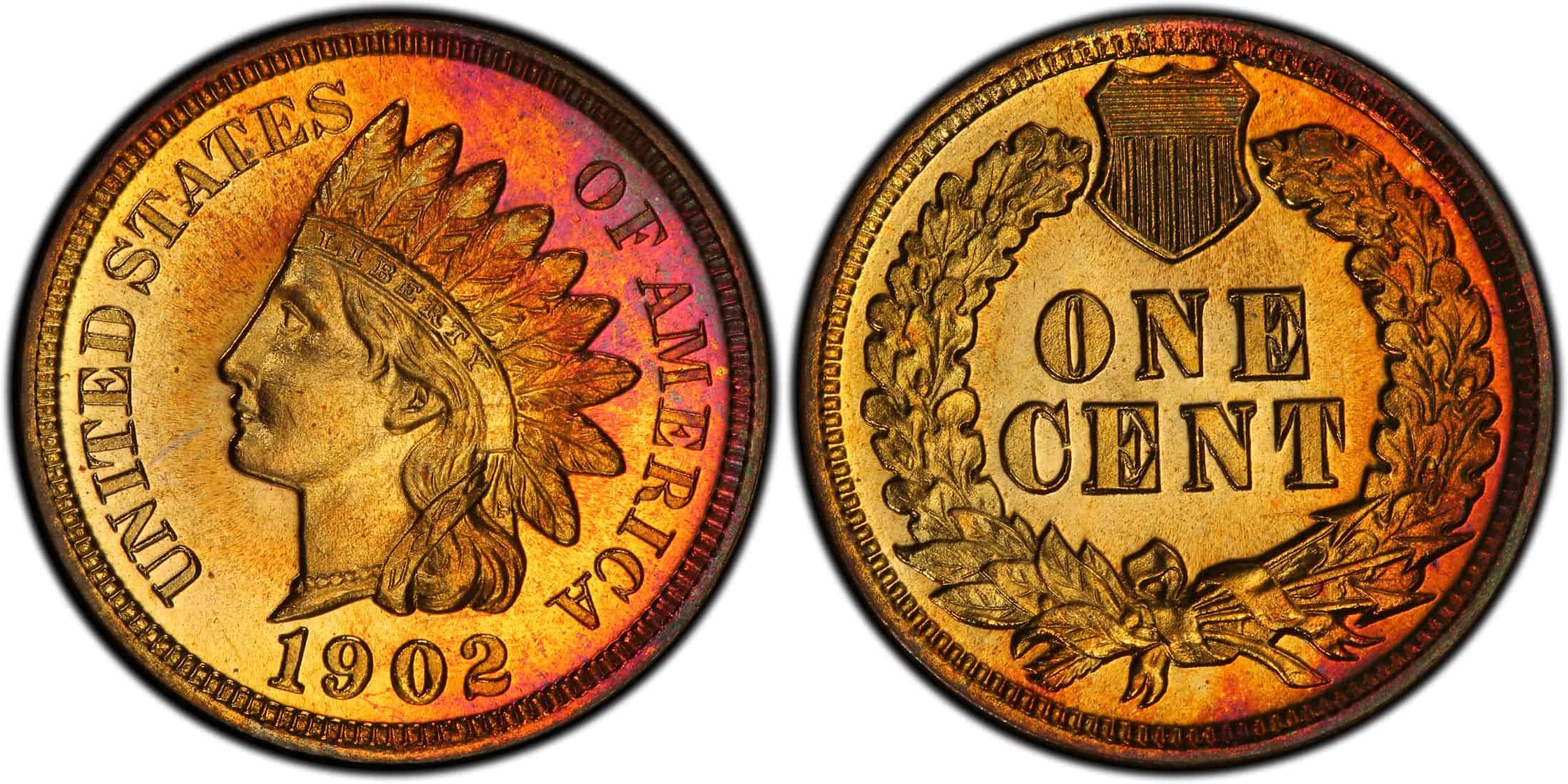
Aside from circulated and mint-state coins, the Philadelphia Mint also created proofs of the 1902 Indian Head pennies. A total of 2,018 pieces were struck then for collectors and archival samples only. These coins were never put into circulation.
Because these coins are incredibly scarce and difficult to source, their value is insanely high as well. A coin with less-than-perfect grading like a PF63 coin, for example, is valued today at $325.
However, something more pristine and near-perfect, like a PF68 Indian Head proof coin, is valued at an insane amount of $32,500.
1902 Indian Head Penny Grading
As with all coins, circulated 1902 Indian Head pennies are worth much less than uncirculated, mint-state ones. But how can you tell if your Indian Head penny is circulated or uncirculated? Here are some things to check on your coin to assess its grade and condition more precisely:
Circulated coins:
- Well-worn with lots of smoothness and flattening on the highest points of the coin
- The word “Liberty” on the young girl’s headdress may not be as readable anymore
- The girl’s curls in her hair aren’t as detailed as before
- On the reverse, the leaves on the wreath don’t look so crisp and are flat instead
Uncirculated coins:
- The coin has great eye appeal because of its shiny, lustrous appearance
- The fine details of the young girl’s features, like her eyes and hair, are clear and bold
- You can still read all the letters and numbers very clearly
- The coin’s color is very obviously still red, not a deep, chocolate-brown hue
Even the most detailed descriptions of coin grades aren’t as easy to follow as visual guides. Here’s a video that will help immensely when you try to grade your 1902 Indian Head pennies:
Rare 1902 Indian Head Penny Error List
Mint errors are more common for coins with high mintages because there is more room for mistakes. Following this logic, it’s quite rare for the 1902 Indian Head penny to have errors, since the mintage is relatively lower than coins made today.
But that’s not to say that errors in the 1902 Indian Head penny don’t exist. There are actually quite a few of them. You just have to keep your eyes peeled and train yourself to look under a microscope to find them.
Let’s take a deep dive into two of the errors that have been discovered in the 1902 Indian Head penny, shall we? We’ll also show you some interesting examples for each one!
1902 Indian Head Penny Die Gouge Error
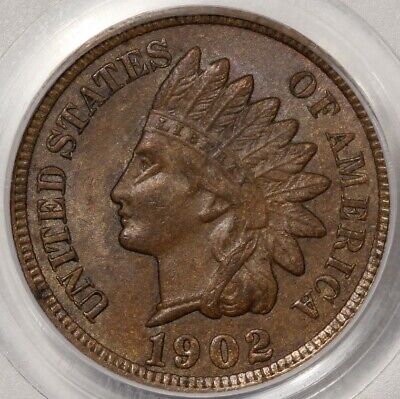
First up, we have a die gouge error. This mint error occurs when there is a foreign object that scratches onto the master die, creating damage that results in a raised area on a coin after it is stamped. A die gouge error is easier to see under a coin microscope.
In the 1902 Indian Head penny, a unique die gouge error is found under the eye of the girl with the Indian headdress. It kind of looks like she has a small scratch under her eye.
A 1902 Indian Head penny in very good condition once sold for $11 because of this error. It might not sound like a lot, but this is actually very valuable already, since the value of an error-free, very good 1902 Indian Head penny today is just $3.
Of course, the higher the grade of the coin with a die gouge error, the more expensive it will be when sold. This error has also been found on an MS63 Brown 1902 Indian Head penny, which ended up selling for $360.
1902 Indian Head Penny Struck Off-Center Error
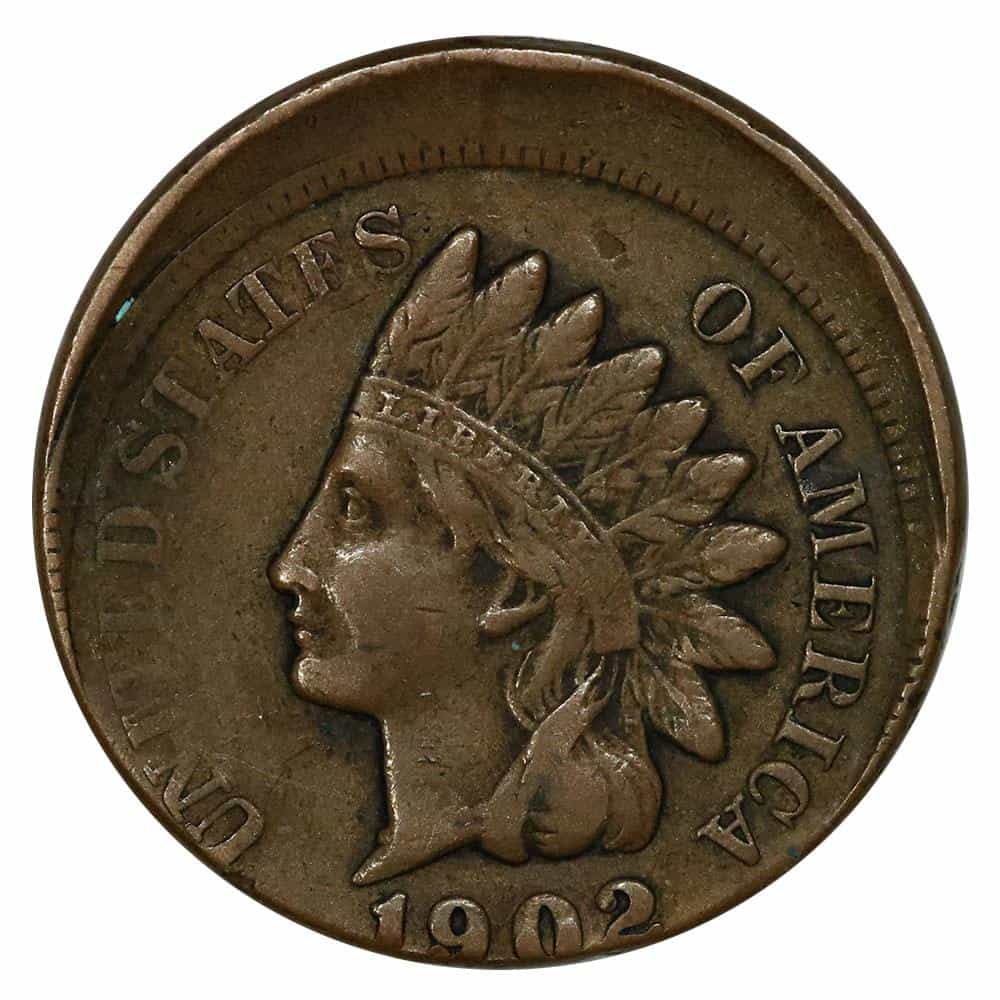
A coin is struck “off-center” if it is struck while the planchet is not correctly positioned between the coin dies. This results in a misaligned stamp that isn’t on the center of the coin. Off-center strikes typically have one area of the coin that is blank, with part of the design missing.
Off-center coins have a designated percentage that tells collectors specifically how off-center the strike is. The higher the percentage of the off-center strike, the more valuable the coin.
For example, a 1902 Indian Head penny in fine, circulated condition with a 12% off-center strike was sold for $161 in 2005. It was blank on the upper rim, with part of the design on the lower part of the coin cut off.
Meanwhile, an AU55 1902 Indian Head penny with a 45% off-center strike was sold for almost $800. That’s almost five times the value of the previous coin because the percentage of the off-center strike was much higher.
1902 Indian Head Penny FAQs
What is a 1902 Indian head penny made of?
The 1902 Indian Head pennies are made of 95% copper. The remaining 5% is a combination of tin and zinc. This is already a huge improvement from the previous composition of just 88% copper, which ran from 1859 to 1864.
What are the oldest Indian head pennies?
The first Indian Head pennies were struck in 1859, making it the oldest date for this series. Like the 1902 issue of the penny, the 1859 run only happened in the Philadelphia Mint. They’re very rare today and are of immense value even in poor, circulated conditions.
Should you clean Indian head pennies?
As with all coins, we don’t recommend cleaning your 1902 Indian Head pennies. No matter how tempting it is to scrub off the grit and grime on your coin, try to leave them on. This will keep your coin as authentic as possible. When you clean them, you run the risk of possibly devaluing them.
Is a 1902 Indian head penny rare?
Yes. Even if the 1902 issue of the Indian Head penny is among the more recent ones of the series before it had its curtain call in 1909, it’s still quite rare. Only lucky and vigilant coin collectors might get their hands on these coins, especially in uncirculated, MS Red condition.
